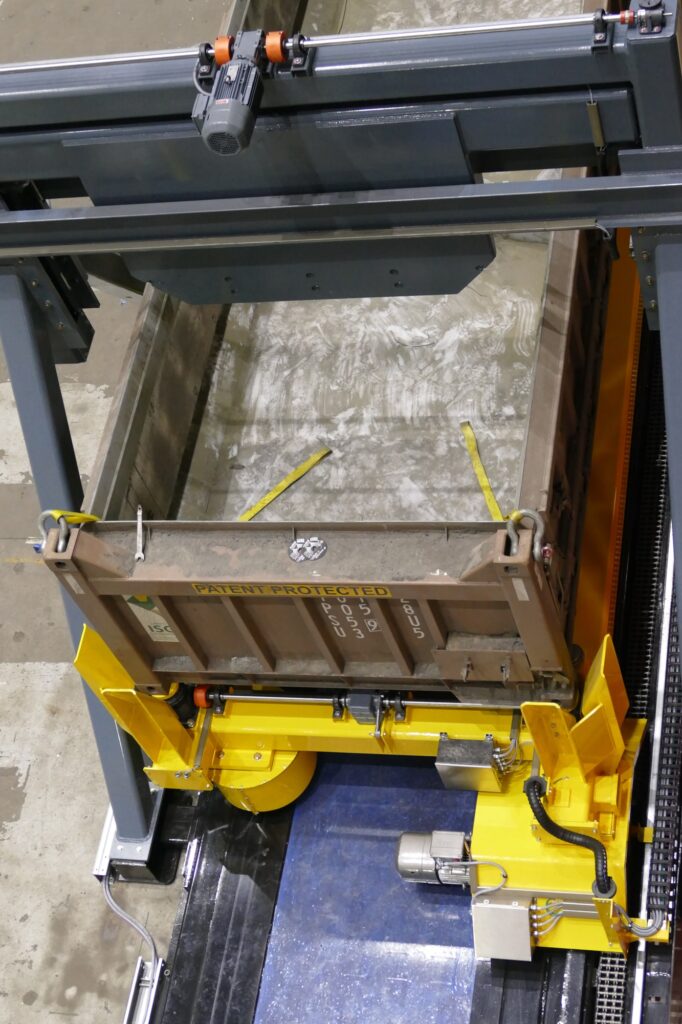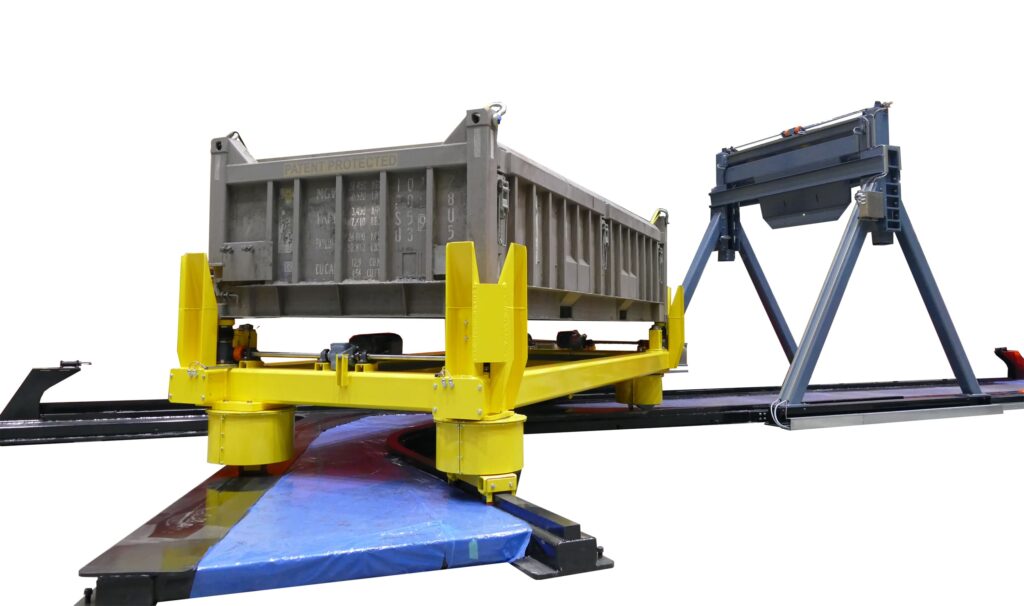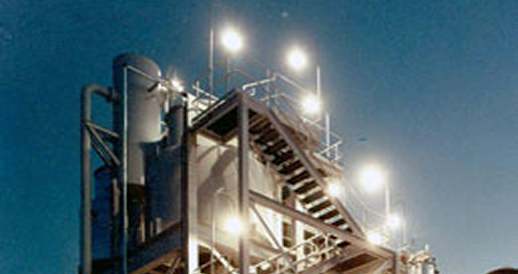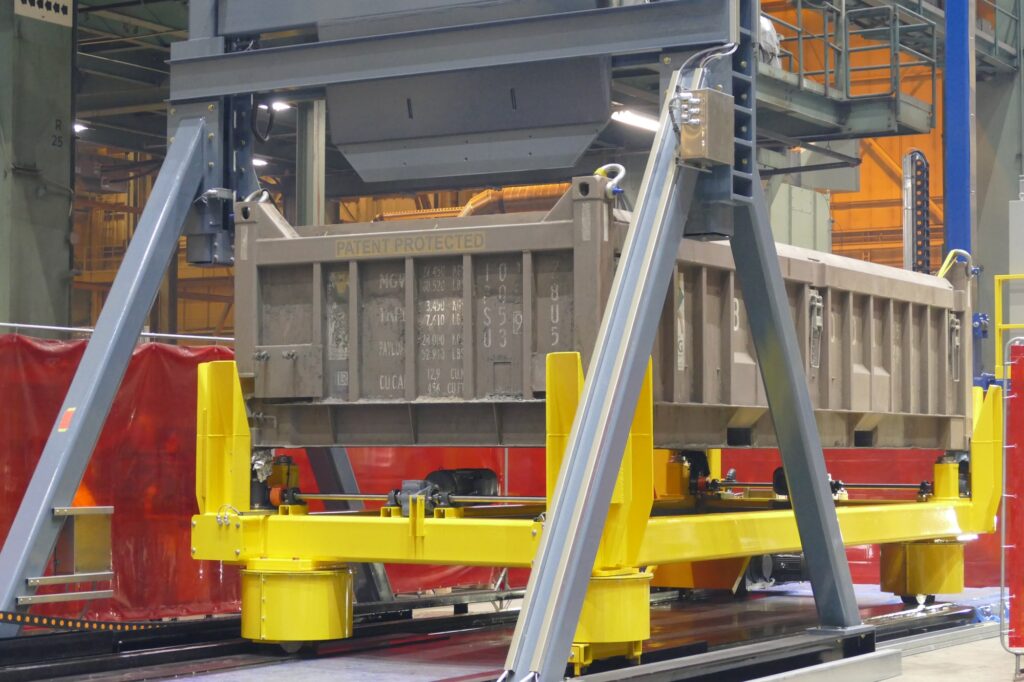The safe, efficient movement of materials is the backbone of every successful mining operation. Whether you’re handling raw ore, intermediate products, or waste streams, the ability to keep materials flowing directly impacts both productivity and profitability. Mining environments are among the most challenging in the world, pushing equipment to its limits with extreme heat, abrasive conditions, and relentless throughput demands.
Whiting Equipment Canada Inc. has been meeting those challenges for more than a century. With over 140 years of engineering and manufacturing experience, we design and build robust material handling systems that are Built to Perform. Designed to Last. Trusted Worldwide. Our focus is simple: keep your processes moving, keep your people safe, and give you the equipment you can count on for the long haul.
In this guide, we’ll explore the critical aspects of mining material handling systems—from throughput targets and load zone design to dust control and condition monitoring—so you can see how the right engineered solutions make all the difference in demanding environments.
Throughput & Availability Targets
Mining operations depend on equipment that can handle high volumes without compromise. Throughput and availability targets aren’t met by chance—they require systems designed for continuous uptime. That’s why our team emphasizes durability, innovative design, and ease of maintenance.
Take Whiting AOD converter systems, for example. These vessels are engineered with reinforced ribs and gusset plates to withstand repeated cycles, ensuring they retain their shape after numerous heating cycles. Features like quick-change locking arrangements and removable top cone sections enable relining to be completed in under an hour, minimizing downtime. A water-cooled oxygen lance accelerates decarburization, further enhancing processing speeds.
The same philosophy drives our Electric Arc Furnaces (EAFs). With deep sidewalls and dished bottoms, they handle light scrap with ease, maintain optimal slag-metal contact, and drain completely when pouring. Upgrades like expanded-capacity shells with water-cooled roofs can boost scrap volume capacity by up to 40%, reducing the number of charges from 5 to 3. This results in higher productivity, reduced refractory wear, and lower overall operating costs.
Other systems follow suit: our channel induction furnaces use semi-teapot spouts to minimize air entry, reduce slag, and extend refractory life. Their patented water-cooled frames enable faster inductor exchanges, reducing downtime. Even our liningless cupolas are designed to cut coke costs by up to 30%, improve metal-to-coke ratios, and extend shell life. Each of these features is designed to achieve one thing—helping you meet ambitious throughput goals without compromising reliability.

Conveyors & Transfer Points
Material rarely travels in a straight line from mine to market. It passes through conveyors, feeders, and transfer points, each of which must be engineered to maintain steady flow and minimize losses.
Whiting’s experience extends into precisely engineered transfer systems that handle everything from bulk raw materials to measured alloy additions. For instance, our automated alloy addition systems—used in AOD converter installations—automatically measure, weigh, and feed alloys, fluxes, and cooling scrap. With 22 bins and retractable feed chutes, materials are delivered seamlessly into the converter vessel, reducing manual handling and improving consistency.
We also design specialized transfer cars through our affiliate company Handling Specialty, to move large volumes of heavy material where it’s needed most. Our 160-ton ladle cars and 50-ton slag pot cars reduce crane dependency and clear bottlenecks in melt shops. Customization is part of the package: we’ve built weigh-scale transfer cars that automatically mix and deliver materials with exact precision.
Every transfer point is an opportunity to gain efficiency—or lose it. By integrating automated systems and purpose-built transfer equipment, we ensure your process doesn’t slow down where materials need to move most.
Load Zone Design
The point where material enters your process is just as important as how it moves once inside. Poorly designed load zones can create spillage, dust, and inefficiencies that ripple through your operation.
That’s why we engineer load zones for performance and safety. Our clamshell charging buckets—capable of up to 2,850 cubic feet—are designed to move scrap steel into EAFs with minimal spillage and maximum density. Often paired with self-propelled transfer cars, these buckets keep the journey from scrap yard to furnace under control.
For alloy additions, we integrate weigh belt feeders with retractable feed chutes, safeguarded by dust control systems. These setups are often built on mezzanine levels to fit seamlessly into existing plant layouts, proving that efficiency and environmental control can go hand in hand.

Transfer Chutes & Liners
Every ton of material that flows through your system wears down operational equipment. Transfer chutes and liners are where that wear is concentrated, which is why they need to be tough and precisely engineered.
Our retractable feed chutes in AOD systems deliver alloys and fluxes precisely where they’re needed, maintaining process chemistry while minimizing excess wear. In molten metal applications, ladle lips and spouts function much like chutes, guiding the flow with accuracy. Whiting ladles often feature dual pouring lips or outside teapot spouts, offering both flexibility and easy relining.
Inside every ladle and furnace, liners do the heavy lifting against heat and abrasion. We design with lining thickness and material in mind, adapting for processes as diverse as steelmaking and nonferrous foundries. In some cases, specialized graphite-type liners prevent contamination while maintaining temperature, ensuring constant, reliable pours. These details protect both your equipment and your product.
Mobile vs. Fixed Handling
Mining operations need both mobility and stability. Some tasks demand the flexibility of mobile systems, while others benefit from the reliability of fixed setups. Whiting delivers solutions on both fronts.
Mobile Handling Systems include:
- Trackmobile® Railcar Movers enable plants to move railcars safely without locomotives.
- Heavy-duty transfer cars, like 160-ton ladle cars or 70-ton coil cars, many with radio control and environmental covers.
- Scrap handling magnets, ranging from 45″ to 75″, for fast, efficient ferrous loading.
- AGVs and MGVs from Handling Specialty, offering advanced automation for moving materials across facilities.
Fixed Handling Systems include:
- Ladle lifts and relining platforms that replace scaffolding, position workers safely, and boost productivity.
- Hydraulic pouring stands for precise ladle control, often with integrated scales and additive bins.
The combination of mobile and fixed systems creates the balance most mining environments need—flexibility when operations change daily and dependability when consistency matters most.

Dust Control & Safety
Dust and safety risks are ever-present in the mining industry. Left unchecked, they harm workers, damage equipment, and slow production. Whiting’s designs tackle both head-on.
Dust control is built into our alloy addition systems, which feature integrated dust capture during loading. Our AOD converter hoods, which are refractory-lined and air-cooled, move horizontally for crane access while efficiently capturing fumes. Together, these measures protect both personnel and equipment from harmful particulates.
Safety features are engineered into everything we build:
- Ladel gearing with automatic brakes to prevent accidental tilts.
- Enclosed ladle handlers with brakes, shielded chains, and sprockets for safe operation.
- Ergonomic relining lifts that reduce fatigue by 32% and cut ladder work risks.
- Robotic immersion samplers that remove operators from dangerous molten metal environments.
- Protective vessel and ladle designs that extend service life and guard against excessive heat.
These systems don’t just meet safety standards—they actively improve workplace comfort, efficiency, and peace of mind.
Controls & Monitoring
Modern mining operations run on data. Advanced controls and monitoring systems enable performance optimization, energy conservation, and the identification of issues before they escalate into problems.
Whiting’s Volta Furnace Master integrates PLCs, PCs, SCADA, and touch-screen interfaces into a single powerful control hub. Operators gain animated graphics, real-time feedback, and complete oversight of the furnace process.
Modules cover every angle: charge bucket weight, infeed handling, temperature monitoring, transformer interlocks, tap changing, electrode positioning, and more. Real-time heat reports help reduce power consumption while maintaining consistency from one cycle to the next.
These systems are designed not only to control but also to assist operators in real time, reducing the risk of error and keeping furnaces running smoothly.
Condition Monitoring Basics
Preventing downtime starts with knowing what’s happening inside your equipment. Whiting’s monitoring systems provide operators with the insights needed to anticipate maintenance and avoid costly failures.
Features include:
- Historical data logging for trend analysis, covering charge weights, ferroalloy use, tons per heat, downtime, refractory running time, and more.
- Transformer status screens showing vault conditions, flow, and electrical parameters.
- Cooling status screens monitor circuits, temperatures, and water flow to prevent overheating.
These insights empower teams to act early, extend component life, and maintain confidence in system performance.
Specification & Selection Checklist
Choosing the right material handling system is a decision with long-term consequences. Here are some key questions to guide your evaluation:
- Is the design specific to your application? (Chemistry, throughput, and production goals all matter.)
- What are the material characteristics? (Density, abrasiveness, temperature tolerance.)
- What throughput and capacity do you require? (EAFs, AODs, and ladles are all sized differently.)
- How harsh is your operational environment? (Cooling systems, heavy-duty construction, and stress relief all add longevity.)
- What safety features are built in? (Automatic ladle brakes, dust capture, ergonomic lifts, and robotic samplers are must-haves.)
- How automated do you want to be? (SCADA, PLCs, and alloy automation all affect efficiency.)
- Can it integrate with existing infrastructure? (Whiting systems are designed to retrofit seamlessly.)
- What’s the maintenance plan? (Ease of relining, lubrication systems, and quick part exchange simplify upkeep.)
- Is the supplier experienced? (Over a century of proven engineering expertise matters.)
Answering these questions will help ensure your system is not just a purchase—but a long-term investment.

Wrapping it up:
Mining material handling systems face some of the most challenging operating conditions in the world. To stay competitive, you need equipment that won’t just survive these environments—it must thrive in them, delivering consistent throughput, maximum uptime, and enhanced safety.
The century-plus legacy of Whiting Equipment Canada Inc. is built on designing, engineering, and servicing material handling solutions that keep critical industries moving. From conveyors and transfer systems to advanced automation and monitoring, we deliver the reliability and expertise your operation demands.
Looking to upgrade your material handling systems or specify equipment for a new project? Contact our sales team to begin building a solution tailored to your specific process, materials, and objectives.






